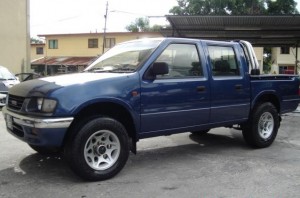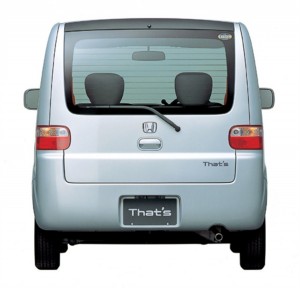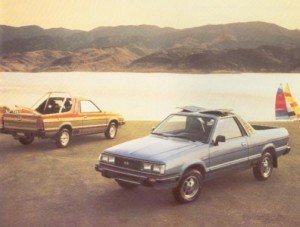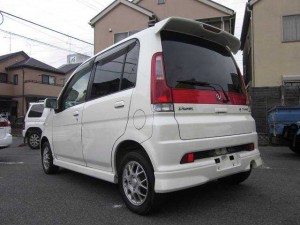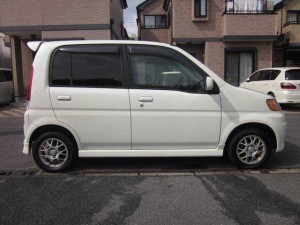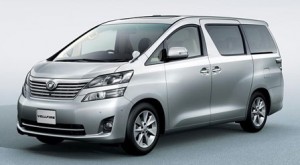Isuzu Invader: Named in Japan
Posted by Doug DeMuro in Named in Japan on | 4 comments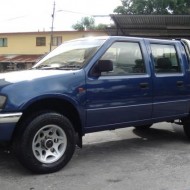
The Japanese were busy on December 7, 1941. In addition to the attack on Pearl Harbor, they also chose that day to invade Malaysia in a city called Kota Bharu. While Japan never made it past Hawaii in the States, they were far more successful in Malaysia, occupying much of the country through the end of the war.
If you’re not asleep yet, you might be questioning what this all has to do with cars.
Well, you see, one might think the Japanese invasion of Malaysia would stop a Japanese car company from selling a car called the “Invader” in Malaysia. But that isn’t the case. In fact, Isuzu not only had the audacity to sell the Invader in Malaysia, they sold it only in Malaysia. In other countries, it was called the TF, or, for some reason, the Isuzu Ippon.
Aside from its name, the Invader looks like a pretty typical third-world pickup truck. You know what I mean: body clearly cobbled together using the front of a rest-of-world SUV and the rear of a commercial vehicle; lots of right angles; weird light bars in the bed without lights, presumably so rebel forces have something to grab on to as they’re being carted through jungles carrying Soviet-era machine guns.
In other words, it would be a great tool for an invasion. Maybe the Japanese had the right idea after all.
Honda That’s: Named in Japan
Posted by Doug DeMuro in Named in Japan on | 2 comments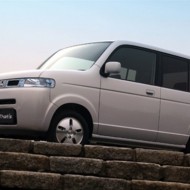
I feel bad for calling out Honda twice in a row in the Named in Japan segment, but not so bad, because they’re the ones picking the names. In fact, this segment probably wouldn’t exist without Honda and its naming department, which I assume consists of toddlers, people on acid, and those unfamiliar with the concept of language. Sort of like Japanese porn.
Anyway, on to the latest car: the Honda That’s. I am not kidding – this is actually the name for this vehicle. The That’s. Imagine the water cooler talk in Japanese offices: “What are you driving these days, Yoshi?” “Oh, nothing special, Mr. Fujimoto. I just traded in my Corolla for a That’s.”
Like the Life Dunk featured in the previous segment, the That’s is a Japanese “kei car,” which means it conforms to a certain size requirement to save drivers money on taxes and insurance. It also puts out about 50 horsepower, which is why I think it should’ve been called the Honda Isn’t. But I hadn’t done enough acid the day I showed up for my interview at Honda.
Truth be told, I think I actually came up with a reason why Honda called it the That’s. The brand’s standard kei car is called the Life, which is a normal ho-hum car purchased by the dozen – sort of like the Civic over here. Meanwhile, the That’s is an alternate choice that’s a little more edgy, but still based on the same chassis. Put them together and you get… That’s Life. As in, ‘Oh, darn, a giant green lizard just ate Tokyo. Oh well, that’s life!’
I should probably stop now, since, half the sentences on this page are underlined in green as Word is angrily trying to get me to finish my thoughts. That’s WHAT?!??!, it’s probably shouting from its feeble, computerized brain. Maybe if I had a Toshiba, it would understand.
Subaru BRAT: Named in Japan
Posted by Doug DeMuro in Named in Japan on | 4 comments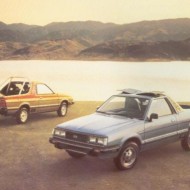
The Subaru BRAT is unique to this segment because, while it was named in Japan, it was also sold in America. Most of the names featured here would never pass muster in the States, where we don’t hang squid in store windows. But in Japan – where they hang squid in restaurants, bars, doctor’s offices and private homes, presumably to ward off Godzilla – it seems anything goes.
Let’s start off with what the BRAT is: crap. It’s also a pickup truck, but not if you ask Subaru. You see, to circumvent the famous “Chicken Tax,” which decrees that all imported trucks be subject to a 25 percent tariff, Subaru installed rear-facing seats in the BRAT’s cargo area so it would qualify as a passenger vehicle. The result was a much lower tax rate and, of course, certain death for those who used the seats, which were without seatbelts, open to the elements, and, inexplicably, plastic.
Since they couldn’t call the BRAT a truck, Subaru called it a Bi-drive Recreational All-terrain Transporter, or, BRAT. Bi-drive, in this case, meant all-wheel drive, which Subaru was hocking even before it had a name. Clever, huh?
Apparently Subaru didn’t think so, as they had a different name for the truck in nearly every market. Other monikers included the Subaru Targa, even though it had a fixed roof; the Subaru Shifter, even though it came with an automatic; and, in Australia, the Subaru Brumby. My personal favorite is the BRAT’s UK name, the 284, which carried no apparent significance other than a randomly-assigned number.
The BRAT lasted through the late 1980s in the States and, somehow, the early 1990s in Asia and Europe before finally succumbing to what could only have been a slew of expensive product liability lawsuits. We don’t miss its weird styling, its silly name, or its dangerous seats. Well, maybe a little.
Honda Life Dunk: Named in Japan
Posted by Doug DeMuro in Named in Japan on | 2 comments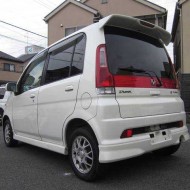
The Strangely Named Japanese Car segment is actually among the most difficult to write here at PlaysWithCars, because there are so many bizarre names to weed through it’s challenging to pick just one. But I’ve decided to give the Honda Life Dunk its place in the (rising) sun as the inaugural entry.
In Japan, there’s a segment called “kei” cars, which are basically tiny cars with small engines that sneak around various tax and insurance requirements that are based on engine and vehicle size. Honda sells one such car called the Life, which is actually a pretty reasonable name. The car has a 660cc three-cylinder, but at least the name is acceptable.
At some point in the late 1990s, Honda realized this vehicle was underpowered and decided to put out a turbocharged version of it. A normal manufacturer may have called this the Life T, or the Life Turbo, or even the Life Sport. But Honda decided instead that it should be named the Life Dunk. I can’t explain it or even rationalize it, and I bet Honda can’t either.
In 2003, the Life was redesigned and the Life Dunk went away forever. But something tells me it won’t be Honda’s last entry into this category.
Toyota Vellfire: Named in Japan
Posted by Doug DeMuro in Named in Japan on | 5 comments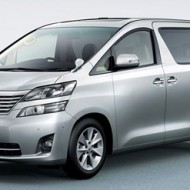
In America, we’re fortunate to get just one Toyota minivan – the Sienna – which faces off against the Honda Odyssey and some trash from Chrysler that yuppie families look at just to be patriotic. No one, you’ll note, looks at the Nissan Quest, which is now shaped like a Japanese dustbuster and can only be regarded as cruel payback for Iwo Jima.
But in Japan, one minivan isn’t enough – probably because they have to transport all those tentacled creatures to porn shoots. As a result, Toyota has about eleven different models, all of which look exactly the same. And one is called the Vellfire.
Yes. Hellfire with a V.
It gets worse. The standard version of this minivan is called the Alphard, which could probably warrant its own inclusion in the ‘Named in Japan’ section if I was a bit more clever (MS Word says cleverer, but really?). Anyway, the sporty version of the Alphard is called the Vellfire. I’m not sure what’s more alarming: that one rhymes with ‘retard’ and the other with ‘hellfire,’ or that there’s a sporty version.
So what exactly distinguishes the sporty Vellfire from its Alphard cousin? Although I don’t see much, it looks like the Vellfire has more aggressive fog lights than the Alphard, which goes along with Toyota’s definition of ‘sporty.’ Both vehicles otherwise fit in with the usual Japanese concept of beauty, which means they’re tall, narrow, and absolutely loathsome to anyone outside Japan except for a few white American guys with a fetish.
We don’t get the Vellfire here, and we probably won’t. But I’m inspired by the idea of changing the first letter of a nasty word to get a vehicle name, which is why I respectfully suggest that Toyota offer a small minivan in the US called the Osshole. It would still outsell the Grand Caravan.
